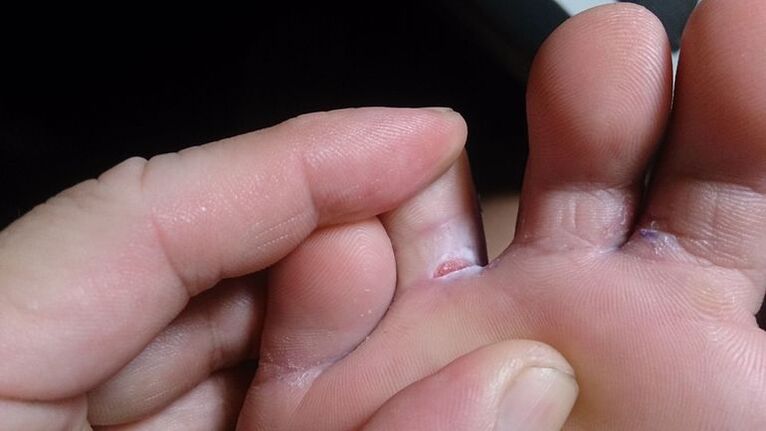
Mycosis are a group of diseases caused by pathogenic fungi.The areas of the skin that affect these microorganisms are called dermatomycosis.Sometimes they combine with onychomycosis: nail disease.Knowing how the fungus looks in the legs, you can cure the disease in a timely manner and prevent complications.There are several options for the course of this pathology.
The foot infection mechanism
There are factors that directly affect the ability to infect with a fungus.In addition, much in this sense depends on the state of immunity.When body defenses are reduced, the probability of mycosis development increases significantly.Immunity can weaken chronic infectious diseases, pathologies of the endocrine system.It can be infected with a fungus straight and indirectly.In the first case, this happens through:
- land layers;
- several plants;
- Contact with an infected person or animal.
An indirect route implies the use of hygiene and other things that the patient actively uses.
The fungi of the Candida genre live on the surface of the epidermis.When the composition of the separate sweat glands changes, a nutritious medium for the development of microorganisms is formed.Representatives of the Candida group acquire pathogenic properties.This means that they can easily cause disease.
Mycosis classification.

With the foot of the athlete, the skin and nails are affected.It can be infected with this disease in public places: in gyms, saunas.Through which objects the pathogen is most frequently transmitted?
- towels;
- Towels;
- rubber;
- ESTERAS
Men in adulthood suffer more often the athlete's foot.A favorable factor for the development of the disease is the increase in sweating.
Tricophitosis can be caused by various types of fungi of the Trichophyton group.The disease is considered highly contagious.It is transmitted through the shoes used by an infected subject, cloths, towels and other bath accessories.Pathology occurs more frequently in children.The prevalence is approximately 17% in adolescents.It is generally young men who suffer.Among adult men, the incidence is even greater.Workshops, bathrooms, showers, athletes and miners are at risk.
The candidiasis of the feet, compared to the athlete's foot, is less common.Most fungi of the Candida genre belong to the group of opportunistic pathogens.This means that these microorganisms are present in the human epidermis in a normal variant.They acquire pathogenic properties after a decrease in immunity.
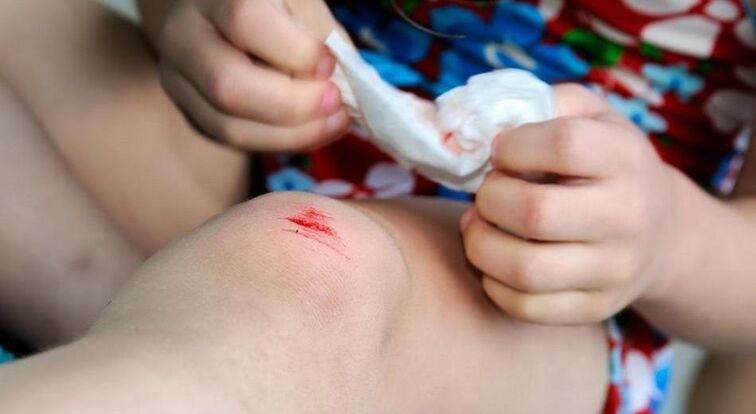
For Candida fungi to enter the body, it is enough to use objects belonging to the patient.These microorganisms are often present in food products such as meat, milk and dairy.The risk of infection increases in the presence of such factors:
- skin lesions due to exposure to chemical components, alkalis and acids;
- maceration, skin sweating;
- The presence of the fungus in the air in large quantities.
Symptoms of the disease
By the nature of the course, rubramycosis and epidermophtosis are similar.For this reason, experts combine them into one category: Mikoza Stop.It is distinguished by its scaly, dyshidrotic and intertriginous forms.A separate group is onylomycosis, which can be:
- atrophic;
- normotrophic;
- hypertrophic.
With dysotic mycosis, the work of the sweat glands is inhibited.Finger fungus with an intertrigonic shape resembles diaper rash.Despite such a division, it should often be considered conditional, since several variations of the disease are combined.
Scaamoso and Dissydrotic
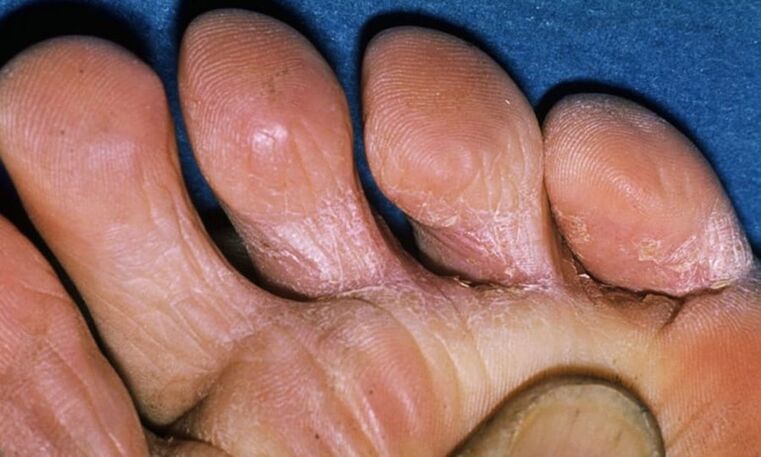
At first, the squamous form of the fungus affects on one side.Then she changes the opposite.The redness areas are formed in the skin, which gradually begin to take off.Individual patients complain of itching.The damage area can be large and small, depending on the patient's body.There are people who suffer in this form of mycosis of their feet, but nothing bothers them.
The fungus in the skin of the legs with a dishuridotic shape is peculiarly: bubbles are formed with a diameter of 2 to 8 mm in large quantities in the arc of the foot.Little by little, they begin to merge in larger formations and then exploded.Instead, ulcerative skin lesions are formed.Sometimes, the process changes to the surface of the internal and external side.The bubbles open, and instead can see areas of eruption eruption.
The fungus in the legs also manifests in itching and pain.Erosion is in the dry and curative future, and the peeling is formed in its place.Fungal infection can be complicated by bacteria.In this case, the liquid located inside the bubbles becomes cloudy.The skin on the feet swells, blushed.A dishuidotic form is characterized by a long flow.Referral periods alternate with exacerbations.Usually, the fungus with this form affects only one foot.
Intriguing shape
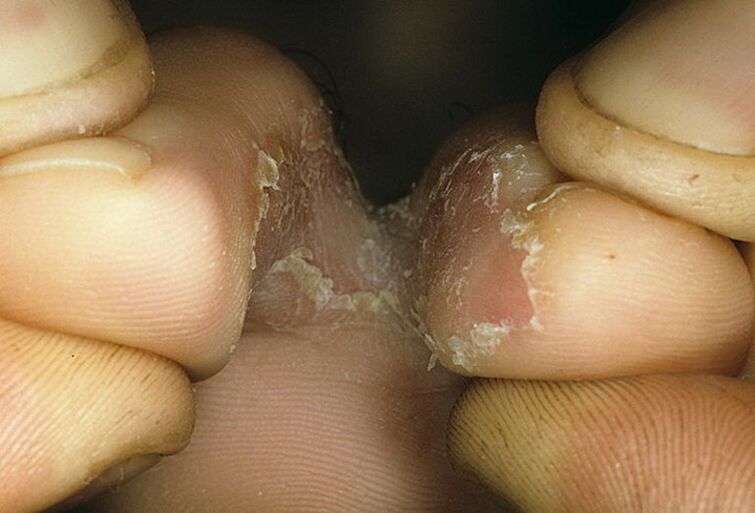
It has become more widespread and arises independently.Less frequently, this form is developed in the context of squamous mycosis.The process affects the area between fingers 4 and fifth of the foot.The key symptom is the appearance of cracks in an epidermis with a whitish edge.The surface layers of the skin are exfolian.Among the fingers, weakening is formed.The patient complains of burning and itching.In lesion areas, quite painful to the touch of erosion shape.
The intriginal form is chronic in most cases, it has a long flow.The condition improves in the cold season and is exacerbated in the summer.In patients with this form, the skin loosen over time.Its protection functions are reduced.This creates a favorable basis for streptococcal infection.In the epidermis, abscesses are formed, which are surrounded by swelling and redness sections.
Types of onylomycosis
This disease causes nail damage to the fingers.The pathogen at the beginning attacks the edges free of the plate.Here, stripes and yellow tone are formed.Several foricomycosis forms are distinguished:
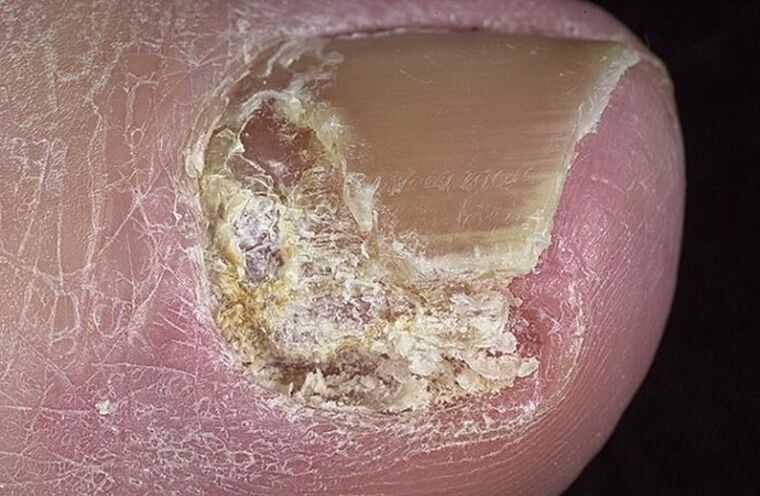
- Hypertrophic.The nail becomes yellow, its thickness increases.It falls apart, and the skin under it fights and thickens.
- Atrophic.Here the opposite situation is observed, when the nail is thinned and destroyed.The skin below is covered with a keratinized layer.
- Caused by molds.It is formed at the bottom of other types of nail diseases.The dish can be green, yellow, brown and sometimes even black.Paronichia is formed in the newspaper space: purulent inflammation.
In 70% of cases, onychomycosis affects 3, 4 and 5 fingers in their legs.In 30% of cases, 1 and 4 fingers suffer.Very often, a normotrophic form of the disease is when yellow spots are present in the nail, but their integrity is not violated.
Fungal treatment
There are several treatment schemes for the disease individually selected by a doctor.
Additional treatment methods include the intake of immunosimulants and vitamins.They help strengthen immunity.If a bacterial infection has joined, antibiotics are prescribed.Sometimes, the appearance of a fungal infection is favored by the underlying disease.It must be treated first.We are talking about dermatological pathologies and chronic infections.Antihistamines are recommended in the presence of an allergic component.
Traditional medicine
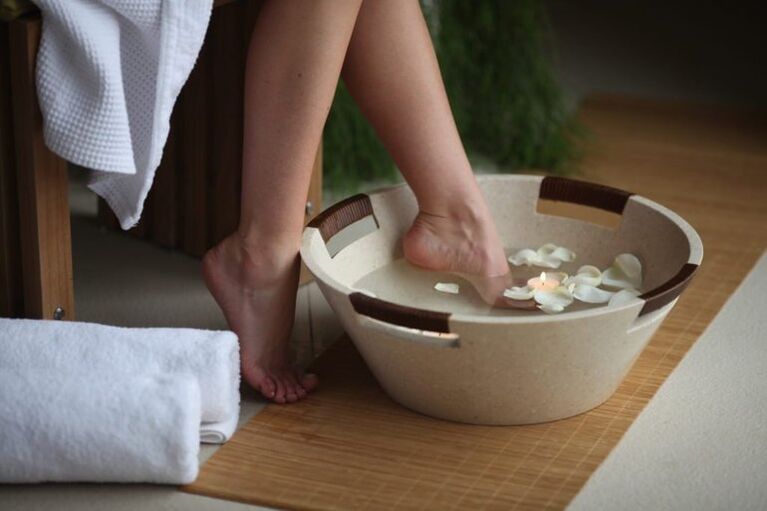
Mycosis does not represent a significant danger to health.But its presence contributes to a decrease in immunity and acts as a source of inflammation.Only antimicotic therapy with the use of specialized medications helps eliminate this problem.In the early stages, the use of popular recipes is allowed, which act as a complement to the main therapy.What techniques can be practiced:
- take baths;
- treatment of affected areas with medicinal herbal decoctions;
- Applying ointment.
For baths you can use wine vinegar, as it has an antiseptic effect.First you should wash your feet with warm water and dry them.Then pour wine vinegar into water in a ratio of 1 to 2 and soak your feet in it.Keep them there for 5 minutes, after which they put on socks at night and go to bed.
Another bathing option is to use soft drinks and salt.Take a tablespoon of both ingredients and dissolve them in water.After this, immerse your feet in the solution and keep them like this for no more than 15 minutes.At the end of the procedure, wash your feet with warm water.
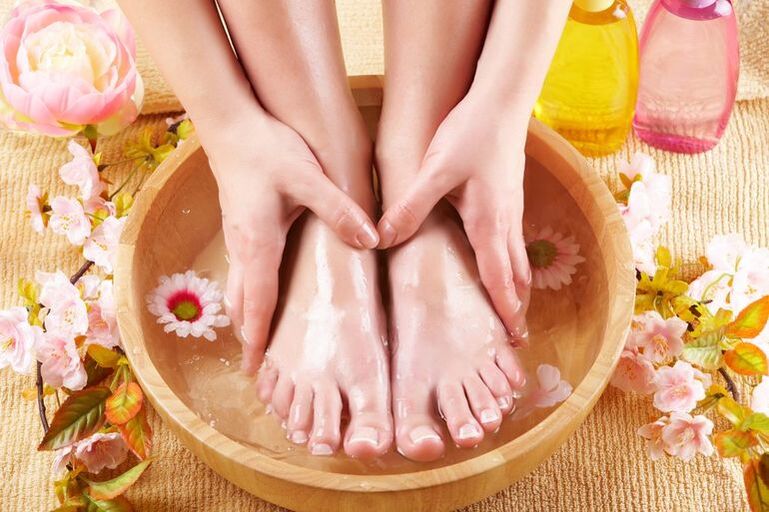
To treat the feet with medicinal decoctions, the verbena officinalis and the inflorescences of calendula can be used.The oak and dried molasses also have a good antiseptic effect.The selected components are mixed in equal quantities.From the resulting mixture, take 3 tablespoons.l.and pour a glass of water.Place over low heat for 15 minutes.Strain and moisten the affected areas with the resulting decoction.This product can also be used for lotions.
To prepare a healing ointment, mix equal amounts of pork fat and sifted wood ash.The resulting ointment should be thick and have a uniform consistency.Apply to clean, dry feet twice a day: morning and night.





























